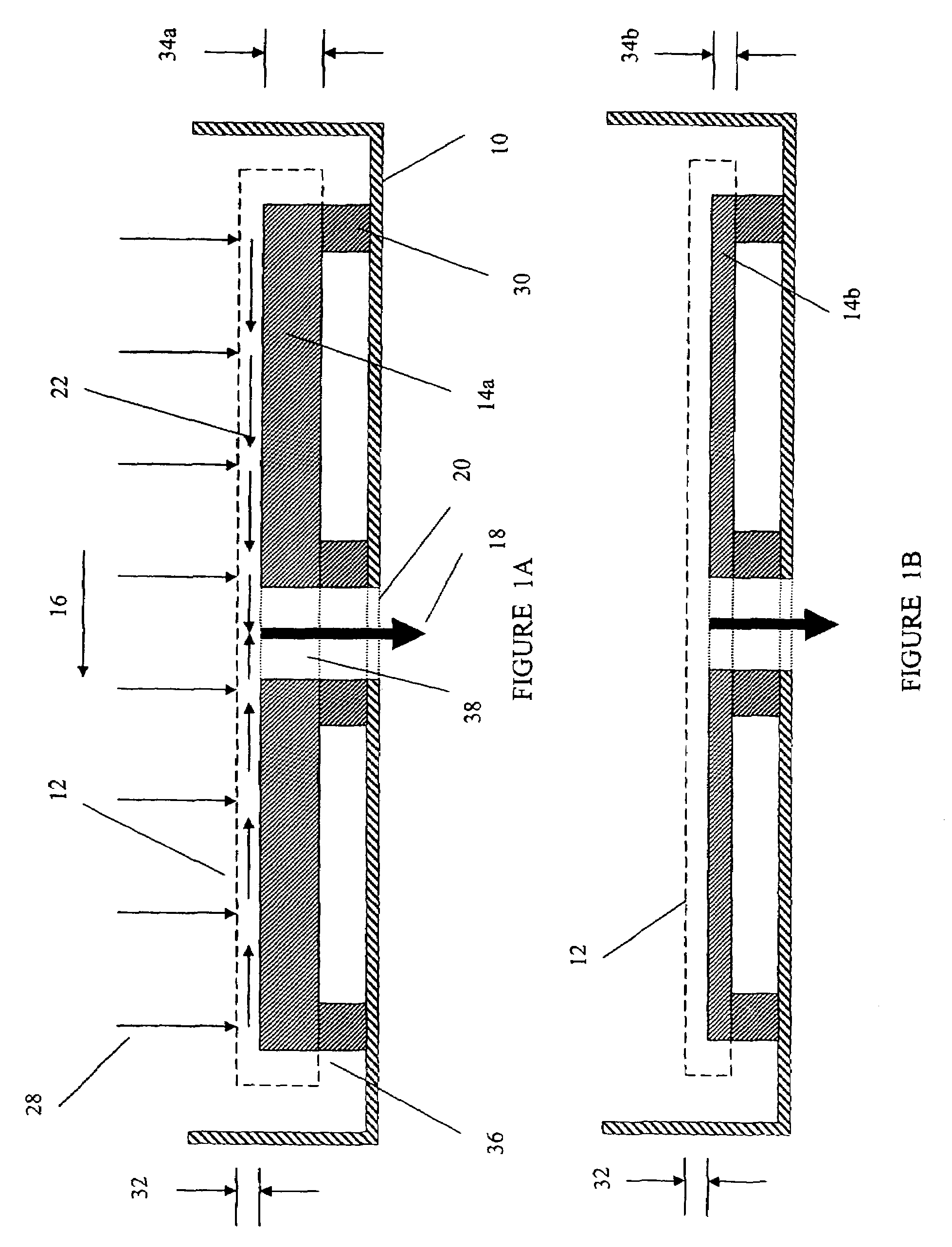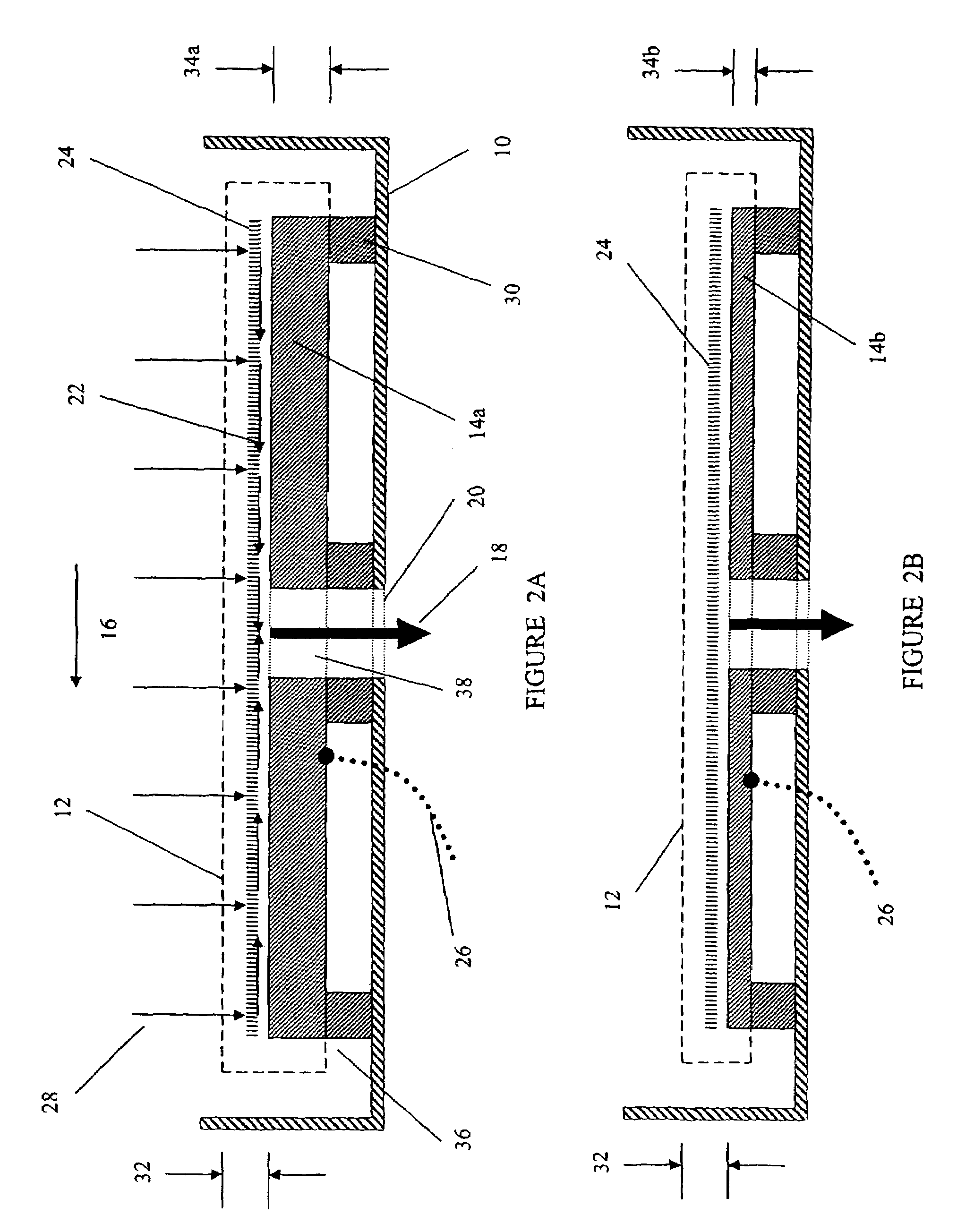Device and method for increasing mass transport at liquid-solid diffusion boundary layer
a technology of diffusion boundary layer and liquid solid, which is applied in the direction of hydrogen/synthetic gas production, chemical/physical/physical-chemical stationary reactors, energy-based chemical/physical/physical-chemical processes, etc., can solve the problems of high capital cost, waste of a large percentage of fluid energy used for circulating fluid, etc., and achieve the effect of increasing mass or energy transpor
- Summary
- Abstract
- Description
- Claims
- Application Information
AI Technical Summary
Benefits of technology
Problems solved by technology
Method used
Image
Examples
example 1
[0058]Control of the boundary layer thickness at a substrate using the present invention is illustrated in FIG. 8A. The thickness of the boundary layer at a substrate, such as the one enclose by a membrane of the present invention may be determined by electrochemical methods. In this example the porous membrane covering the substrate is 0.2 m UPE membrane with a thickness of about 20-40 m. For example it is known that the limiting current in an electrochemical cell is a function of the thickness of the fluid boundary layer at given bulk concentration of ion in the fluid. The limiting current density may be determined through the relationship iL=[(nFDi(surface ion concentration−bulk ion concentration)) / (thickness of boundary layer)]; where n is the charge number for the ion of interest, for example for a cation M+n (i.e. for Cu+2 or Ni2+, n=2), F is the Faraday constant, Di is diffusion coefficient of the ion. The surface ion concentration for M+n may be taken as the concentration of...
example 2
[0061]Mass transfer is a limiting factor in fuel cell efficiency. In order to maximize mass transfer rates the anode-cathode gap is kept small and ion exchange materials are often used in the electrolyte area. The ion exchange membranes have limits in ion transport rates and temperature and are often deteriorated by oxygen.
[0062]A fuel cell with source of fuel 266, source of oxidant 268, and a conforming membrane 276 adjacent to the anode 284 surface could be used to control the fluid boundary layer 282 and maximize mass transfer as shown in FIG. 9. In order to implement the conforming membrane in a fuel cell, electrolyte re-circulation may be established using a pump 280. Re-circulation of the electrolyte would provide electrolyte flow 274 that passes through the membrane 276 and sweeps fluid 282 across the surface of the anode 284. As in other applications a thin under drain layer between the membrane and electrode could be used to improve flow rate and uniformity (not shown). Fur...
PUM
| Property | Measurement | Unit |
|---|---|---|
| height | aaaaa | aaaaa |
| height | aaaaa | aaaaa |
| pore sizes | aaaaa | aaaaa |
Abstract
Description
Claims
Application Information
 Login to View More
Login to View More - R&D
- Intellectual Property
- Life Sciences
- Materials
- Tech Scout
- Unparalleled Data Quality
- Higher Quality Content
- 60% Fewer Hallucinations
Browse by: Latest US Patents, China's latest patents, Technical Efficacy Thesaurus, Application Domain, Technology Topic, Popular Technical Reports.
© 2025 PatSnap. All rights reserved.Legal|Privacy policy|Modern Slavery Act Transparency Statement|Sitemap|About US| Contact US: help@patsnap.com



